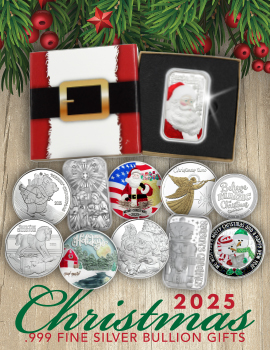
Authorized by Congress on April 2, 1792, the silver dollar was not officially produced until 1794. Delayed production was caused by Congress as they (the House and the Senate) made it clear that the chief coiner and assayer would need to post bonds of $10,000 each before they could work with the precious metal needed to issue the coins. Frustrated by the delay and the requirements, Mint Director David Rittenhouse appealed for help to the Secretary of State Thomas Jefferson who would eventually succeed in getting Congress to lower the bonds to $5,000 for the chief coiner and $1,000 for the assayer. They were then able to meet the monetary demand and finally produced the remaining denominations of coins they needed to, including the silver dollar.
Flowing Hair (1794-1795)
Silver coinage for the United States Mint only included two denominations at the beginning: the dollar and half dollar. The dollar was deemed the most important of the two so the Mint struck them first with Engraver Robert Scot having been told to prepare their designs before the mess of the legal requirements were finished. Congress wanted the new dollar coins to bear the image of Liberty. Scot would heed to this demand, creating a right-facing profile of a young female whose hair flowed behind her. It would be how the dollar got its name (Flowing Hair). “LIBERTY” is inscribed above her with the date below surrounded by 15 stars referring to the number of states in the Union at the time.
The reverse features a small eagle with its wings spread and perched upon a rock. Laurel branches surround the eagle with the motto “UNITED STATES OF AMERICA” flowing around the outer edge of the design. Its edge was incused with “HUNDRED CENTS ONE DOLLAR OR UNIT” with decoration depicted between the words.
Mintage for the entire series is below 200,000 with the first year of production (1794) recording just 1,758 which is said to have been done with a single pair of dies. It is also said that the Mint actually struck 2,000 but some were rejected from being struck with weak detail. Suspended production due to machine issues would cause a new design to be made and the discontinuation of the Flowing Hair Dollar. Although brief, the series is still widely collected with the 1795-dated coin having three varieties: Two Leaves, Three Leaves, and Silver Plug.
Draped Bust, Small Eagle Reverse (1795-1798)
The design of the Draped Bust silver dollar revealed the growth of a nation. From a young female with “flowing hair” to a depiction of a full-figured woman on the obverse of the new dollar coin, the portrait would signify a major change in the U.S. The Draped Bust portrait would end up featured on all five silver coins being issued at the time, including the dollar, half dollar, quarter, dime and half dime. The dollar denomination, however, would be the first to showcase the new design.
The transition from the Flowing Hair design to the Draped Bust would occur during a change in leadership as well. Mint Director David Rittenhouse would resign at the end of 1795 and the Mint would usher in a replacement in Henry William DeSaussure. The change would also usher in the desire for improvement, focusing on those struck in silver. While changing the obverse to the Draped Bust, the eagle on the back would remain the same given a few alterations. It would be called the “Small Eagle” reverse. The Small Eagle reverse would see a total of 170,434 coins struck with its design, ending in 1798. Its first year of issue would see 42,738 minted with two varieties: Uncentered Bust and Centered Bust.
Draped Bust, Heraldic Eagle Reverse (1798-1804)
In 1798, the reverse design of the small eagle was changed to an older and more natural looking eagle: the Heraldic Eagle. The star pattern emerged above the eagle’s head in addition to a shield and “E PLURIBUS UNUM” being featured in a ribbon held by the eagle’s beak. Between 1798 and 1804, over 826,000 coins were minted with the Heraldic, or Large, Eagle reverse.
However, after 1800, silver dollars were starting to disappear from circulation. Some were melted for their intrinsic value, others were shipped overseas. By 1804, dollar production had ceased. Despite their short-lived production, the Draped Bust series as a whole (1795-1804) are highly collected.
Source: NGC Coin; The Official 2023 Red Book







